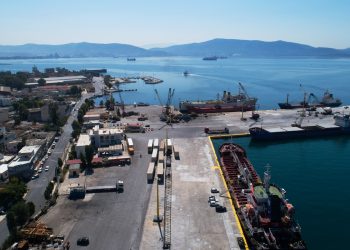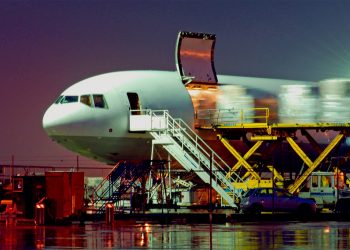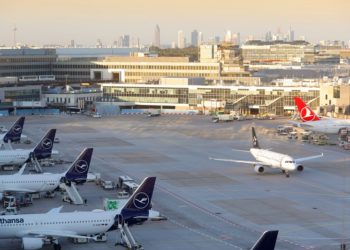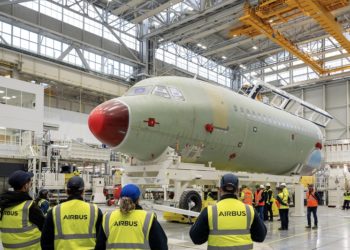The International Air Transport Association (IATA) released data for global air freight markets in September 2017 showing that demand (measured in freight tonne kilometers or FTKs), rose 9,2% compared to the same month in 2016.
This was the slowest pace of growth seen in five months. However, it was still significantly higher than the five-year average growth rate of 4,4%.
Freight capacity (measured in available freight tonne kilometers or AFTKs), rose by 3,9% compared to September of last year -less than half the pace of demand growth. This is positive for industry load factors, yields, and financial performance.
It appears that the industry has passed a cyclical growth peak. The upward trend in seasonally-adjusted freight volumes in Q3 has eased and the inventory-to-sales ratio in the US is now trending sideways. This indicates that the period when companies look to restock inventories quickly -which often gives air cargo a boost- has ended.
“Demand for air cargo grew by 9,2% in September. While that’s slower than in previous months, it remains stronger than anything we have seen in recent memory. But there are signs that this demand spurt may have peaked. So it becomes even more important to reinforce the industry’s competitiveness by accelerating the modernization of its many antiquated processes,” said Alexandre de Juniac, IATA’s Director General and CEO.
With year-to-date demand growth of 10,1%, the IATA forecast of 7,5% growth in air freight demand for 2017 appears to have significant upside potential even if the peak of the economic cycle has passed.
| SEPTEMBER 2017 (% YEAR-ON-YEAR) | WORLD SHARE1 | FTK | AFTK | FLF (%-PT)2 | FLF (LEVEL)3 |
|---|---|---|---|---|---|
| Total Market | 100.0% | 9.2% | 3.9% | 2.2% | 45.5% |
| Africa | 1.6% | 17.7% | 2.6% | 3.1% | 24.2% |
| Asia Pacific | 37.4% | 9.3% | 5.3% | 2.0% | 56.2% |
| Europe | 23.5% | 10.3% | 5.6% | 2.0% | 45.0% |
| Latin America | 2.8% | 7.6% | 5.9% | 0.6% | 35.2% |
| Middle East | 13.9% | 8.9% | 2.6% | 2.6% | 44.7% |
| North America | 20.7% | 7.4% | 1.4% | 2.1% | 37.6% |
Regional Performance
Airlines in all regions reported an increase in year-on-year demand in September.
Asia-Pacific airlines saw freight volumes increase by 9,3% in September 2017, compared to the same period last year. Capacity in the region expanded 5,3%. Demand growth was strong on all the major routes to, from and within Asia-Pacific, consistent with strong export order books for the region’s manufacturers. Exporters in Chinese Taipei, China and Japan all reported growing order books.
North American carriers posted an increase in freight volumes of 7.4% for the month; the region also posted the second fastest international growth rate among regions (11.0%). Capacity increased 1.4%. The strength of the US dollar boosted the inbound freight market in recent years. Data from the US Census Bureau shows a 12.0% increase in air imports to the US in the first seven months of 2017, compared to a slower rise in export orders of 6.6%. However, there are signs that the decline in the US dollar since the start of the year is beginning to rebalance trade flows. In August 2017, the most recent month for which data are available, exports from the US by air grew 12.7% while imports by air grew more slowly at 7.4%.
European airlines posted a 10.3% increase in freight demand in September 2017, and a capacity increase of 5.6%. Concerns that the recent strengthening of the euro might have affected the region’s exporters have not materialized. In fact, German manufacturers’ export orders are growing at their fastest pace in more than seven years. Freight demand is strongest on the routes to and from Asia – which have received a boost in trade from the economic stimulus measures put in place by China – and across the Atlantic.
Middle Eastern carriers‘ year-on-year freight volumes increased 8.9% in September 2017 and capacity increased 2.6%. This was a slowdown in demand from the previous month. A short-lived weak patch in demand in Q3 2016 has meant that recent months have produced volatility in the year-on-year growth rate. Seasonally-adjusted international freight volumes, however, have continued to trend upwards at a rate of 8% over the past six months. Still, strong competition, particularly on the Asia-Europe route, means that Middle East carriers are not seeing as healthy a pickup in the seasonally-adjusted traffic trend as carriers in other regions.
Latin American airlines experienced a growth in demand of 7.6% in September 2017 and capacity increased by 5.9% compared to the same period in 2016. International freight volumes rose by 8.6% over the same period. This is well above the five-year average rate of 0.1%. The pick-up in demand reflects signs of economic recovery in the region’s largest economy, Brazil. Seasonally-adjusted international freight volumes are now back to the levels seen at the end of 2014.
African carriers posted the largest year-on-year increase in demand of all regions in September 2017, with freight volumes rising 17.7%. This is a slowdown from August but still more than twice the five-year average growth pace of 8.9%. Capacity increased by 2.6% over the same time period. Demand has been boosted by very strong growth on the trade lane to and from Asia which increased by more than 67% in the first eight months of the year. However the upward trend in seasonally-adjusted volumes has flattened in recent months.
(iata.org)


















































